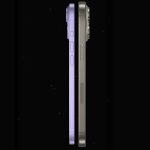Shopping for perfume might at first seem like an easy task—you pick and choose based on what smells good, right? But in actual fact, there’s a lot more to consider when it comes to finding a new fragrance. From the silage of a perfume to its longevity, the time of year (or day) it’s best suited for, its top notes, heart notes, and base notes, and even the perfumer behind the fragrance, the world of perfume shopping is much more complex than you might think.
Indeed, there’s a whole host of fragrance jargon that you’ll probably want to get clued up with before you even start. For example, perfume experts will urge you to consider the silage (the trail or ‘wake’ that a perfume leaves behind you) or a fragrance, and also its longevity (how long it lingers on your skin). It’s also worth brushing up on your ‘fragrance families’ (for example, ‘floral‘, ‘aquatic’, and ‘woody‘), and as this is a good way to figure out which individual notes you’re most drawn to.
One of the key things to consider is the difference between eau de toilette and eau de parfum. Although this is something that’s usually labelled on the front of a perfume bottle, it’s something a lot of people miss entirely—and it makes a big difference to both the silage and longevity of your fragrance. With the help of fragrance expert and founder of Ellis Brooklyn, Bee Shapiro, we’ve answered all your questions about eau de toilettes versus eau de parfums.
Fragrances are made up of a blend of scented oils, alcohol, and water. The scented oils would be too intense and overwhelming to wear on their own, so water and alcohol are added to help create a more wearable and less intrusive scent. “Although there are no formal rules for this, the general rule of thumb is that an eau de toilette contains 10-15% scent in the formula,” says Shapiro. This results in a fragrance that is quite light and fresh, so eau de toilettes make for good everyday perfumes.
Like eau de toilette, eau de parfum is made up of a blend of scented oils, alcohol, and water, but the concentration of scent is stronger, resulting in a stronger fragrance. “Same as the eau de toilette, there are no formal rules for this but the general rule of thumb is that an eau de parfum contains 15-20% scent,” explains Shapiro. “Some high quality eau de parfums also reach 25% in scent concentration.”
“The main difference is the scent concentration,” says Shaprio. “Eau de parfums will last longer purely by scent concentration but also your initial impression of the scent will be more memorable.” This means that when it comes to applying your fragrance, you can apply an eau de parfum quite sparingly, whereas an eau de toilette will require a more generous application if you want to scent to make an impact.
“High quality eau de parfums also have a lovely degree of complexity,” adds Shapiro. You’ll find that for this reason (and the increased amount of perfume oils in the formula), eau de parfums are usually more expensive than eau de toilettes. “Because eau de parfums are usually more complex and nuanced, they have this lovely qualitative and ‘expensive’ feel,” she adds. “Eau de toilettes are very easy to wear and it’s difficult to overwhelm yourself with fragrance as the scent will wear off naturally—so with eau de toilettes it’s a more light hearted approach, and with eau de parfums it’s a more artistic mindset.”
This fresh, green scent works perfectly as an eau de toilette as it’s so light and clean.
Inspired by a barefoot stroll through the surf, this scent features delicate notes of ylang-ylang, lemon, and coconut milk.
This bright and uplifting scent is so perfect for summer. It’s simultaneously fruity and floral.
Laboratory Perfumes’ sustainable scents draw their inspiration from the British landscape. Gorse is fresh and crisp a homage coastal heathlands.
Like most Chanel fragrances, Chance is available in both eau de toilette and eau de parfum form. The elegant blend of pink pepper, jasmine, amber, and patchouli, works particularly well as a lighter scent.
This eau de toilette version of one of Tom Ford’s bestselling eau de parfums is another spot-on summer scent. It spans both the floral and amber fragrance families, drawing upon warm notes of cardamom, pepper, orange blossom, and vanilla.
This is one of those impressive scents that lingers on skin (and earns you compliments) all day long. It’s inspired by the rainbow, so uses an ingredient for every colour. The result is a really complex and alluring scent.
Orange blossom takes centre stage in this warm, bright scent. It lingers impressively on skin, hair, and even your clothes.
All of Byredo’s fragrances are eau de parfums, and as a result they all have very impressive silage and longevity. Gypsy Water is a fan favourite, combining sweet and woody notes like juniper and pine.
Bright and fresh, this eau de parfum makes a bold statement before settling into a deeper and richer scent on the skin.
Penhaligon’s are also well-known for creating scents that both make bold entrances but also last really well on skin—no need for top-ups. Solaris is a rich, floral scent, drawing upon notes of blackcurrant, neroli, and tiare flower.
Warm and spicy, but also citrusy, this eau de parfum features lesser-used fragrance notes like turmeric and ginger alongside classic favourites such as musk and sandalwood.
Next Up: I’ve Done the Research—These Perfume Brands Generate the Most Compliments







